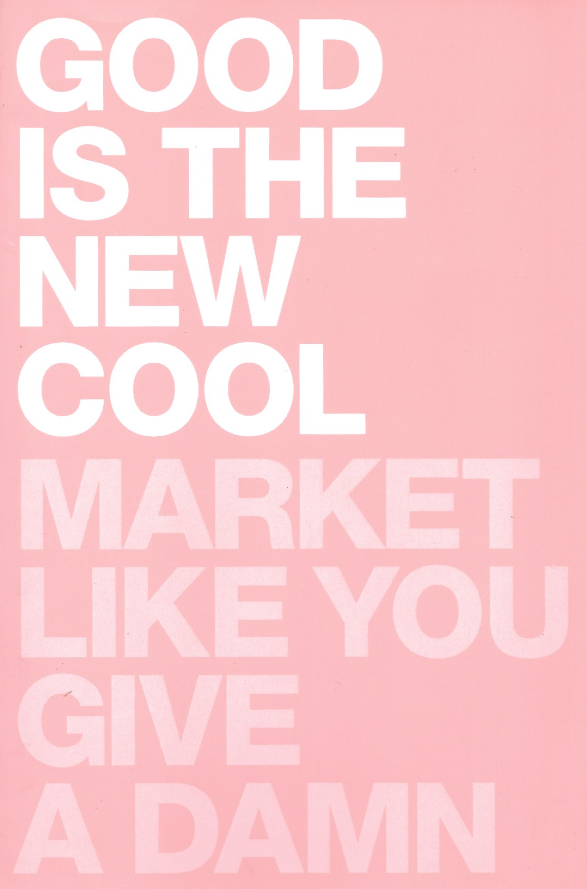The one sentence summary
There is a new way to market like you give a damn by harnessing the power of cool to make money and do good.
Can’t be bothered to read it? Listen to the 5-minute summary.
WHAT THE BOOK SAYS

- There are three big cultural shifts going on:
- Generational: Millennials and Gen Z have new expectations of brands.
- Technological: technology has disrupted advertising.
- Spiritual: there is a crisis of meaningfulness in marketing. “The fact of the matter is that consumers don’t trust marketing.” (Morton Albaek)
- Great marketing optimizes life. The new model of marketing is to make money and do good by harnessing the power of cool.
- To do this, brands (Commerce) need to work with nonprofits (Conscience) and artists (Culture).
- “Every time you spend money you’re casting a vote for the type of world you want live in.” (Anne Lappe)
- The seven principles of how to market like you give a damn are:
1. Know your purpose: great companies have a higher-order purpose than just profit.
2. Find your allies: build coalitions with allies who have similar purpose.
3. Think citizens, not consumers: treating people as ‘consumers’ creates a low-quality one-dimensional relationship with them.
4. Lead with the cool, but bake in the good: you need great design as well as a great story to make it all work.
5. Don’t advertise, solve problems: add value to peoples’ lives by solving problems, don’t just advertise at them.
6. People are the new media: 92% of people trust recommendations from friends and family. That’s what marketers should be striving for.
7. Back up the promise with the proof: people can spot bullshit so provide tangible evidence of the good that you claim to be doing.
WHAT’S GOOD ABOUT IT
- The least four valuable professions to society are advertising/marketing, actor/actress, dancer, and PR professional, so there’s an automatic credibility gap when advertising.
- Cause washing or purpose washing is touting a noble cause without following through with authenticity. Avoid this.
- Look for ROP not ROI: return on purpose, not investment.
- Your culture is your brand – that’s people being good people and creating ‘storyworthy’ moments.
- Overall, create purpose-based marketing experiences and services that are so inspirational, educational or useful that they create an army of advocates – a complete change from old-fashioned broadcast advertising.
WHAT YOU HAVE TO WATCH
- The book is mainly full of case histories, some of which you may have seen before, so you could just read the first part.
